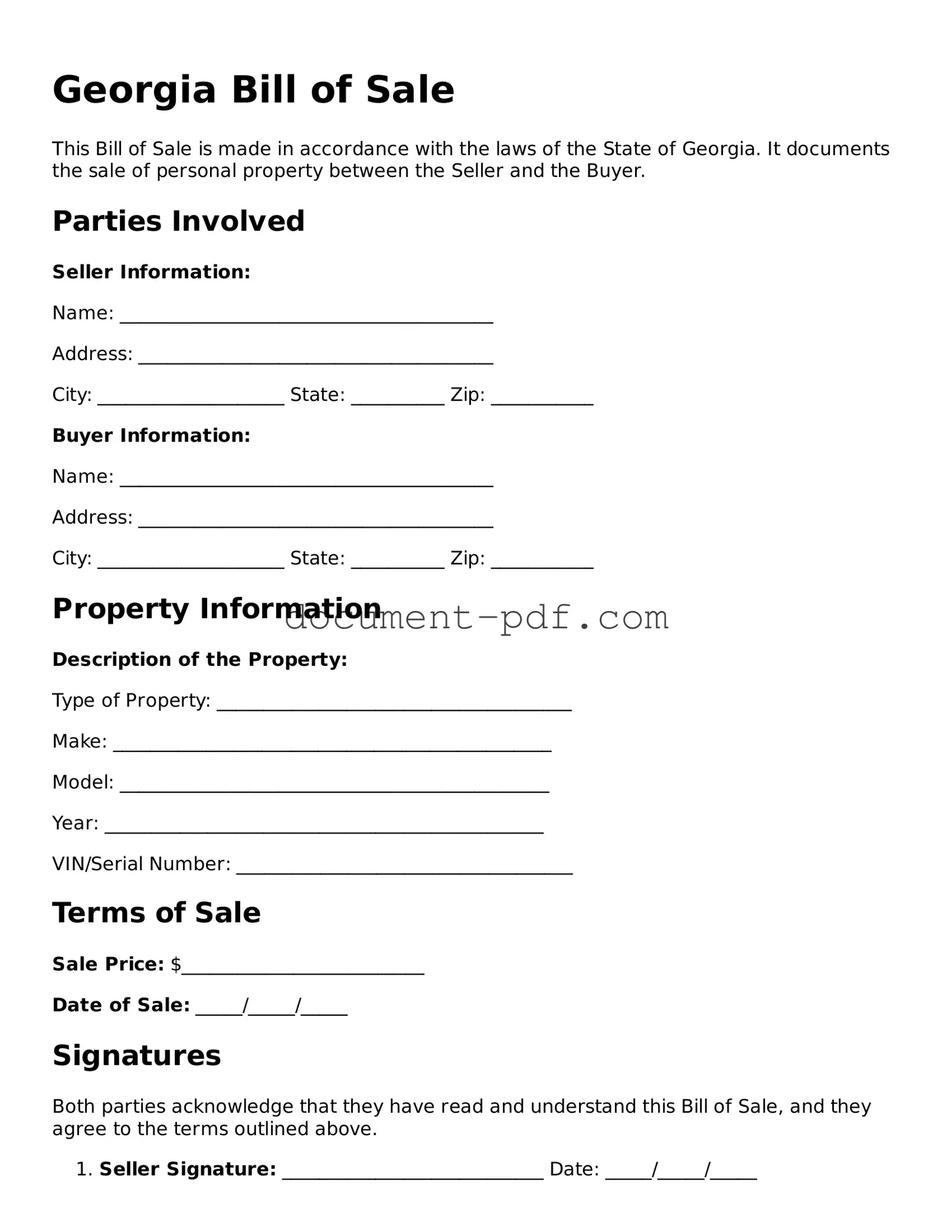Georgia Bill of Sale
This Bill of Sale is made in accordance with the laws of the State of Georgia. It documents the sale of personal property between the Seller and the Buyer.
Parties Involved
Seller Information:
Name: ________________________________________
Address: ______________________________________
City: ____________________ State: __________ Zip: ___________
Buyer Information:
Name: ________________________________________
Address: ______________________________________
City: ____________________ State: __________ Zip: ___________
Property Information
Description of the Property:
Type of Property: ______________________________________
Make: _______________________________________________
Model: ______________________________________________
Year: _______________________________________________
VIN/Serial Number: ____________________________________
Terms of Sale
Sale Price: $__________________________
Date of Sale: _____/_____/_____
Signatures
Both parties acknowledge that they have read and understand this Bill of Sale, and they agree to the terms outlined above.
- Seller Signature: ____________________________ Date: _____/_____/_____
- Buyer Signature: ____________________________ Date: _____/_____/_____
This document serves as a receipt for the sale and transfer of the property listed above.
